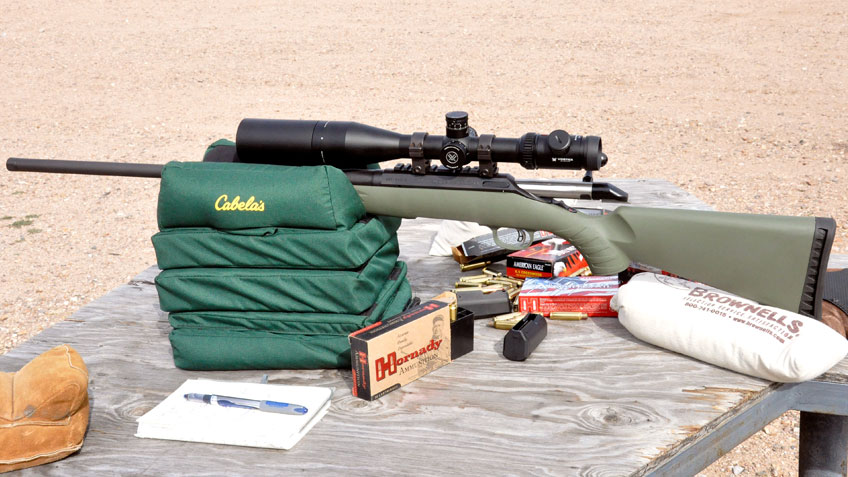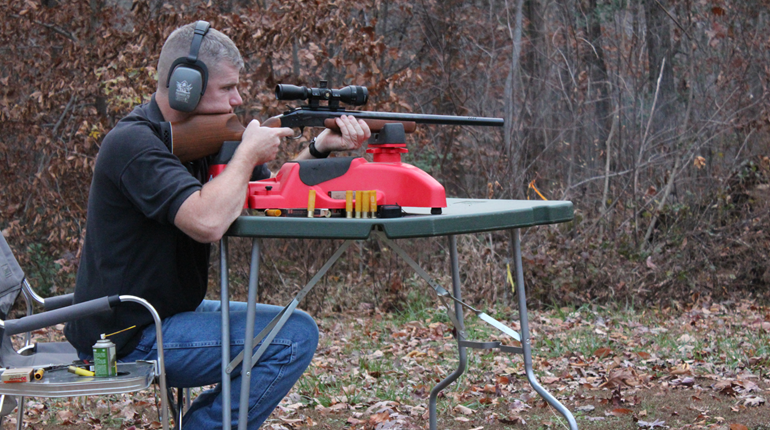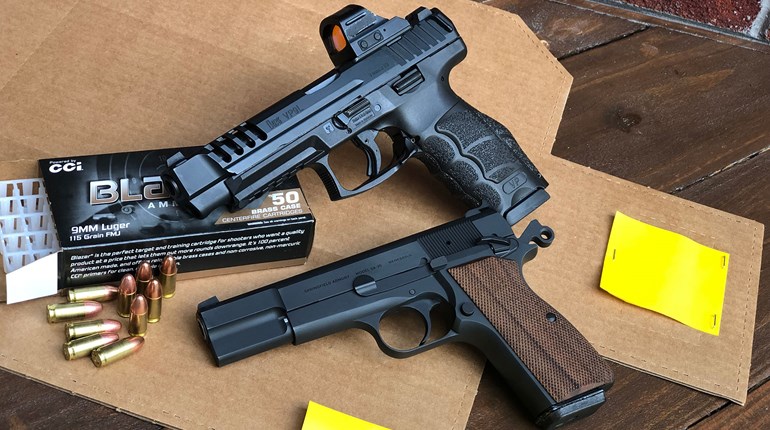
Benchrest shooting seems simple, but is challenging in that near perfection is feasible. Take your time and follow an ordered sequence when shooting to achieve the smallest group possible.
As hunting season approached, the assistant chief summoned me to Border Patrol sector headquarters. On the way there, I thought over my transgressions of late and wondered which of them might be the subject of his summons, so I was greatly relieved when he handed over his rifle and asked me to sight it in for him. While it must have worked out OK—the Chief got his deer—I’m not a big believer in zeroing rifles for others because there are just too many variables in the way each of us hold the rifle, see the sights and press the trigger.
You can zero a rifle, that is adjust the sights to a particular distance, from a benchrest using a rifle rest, sandbags or bipod. The idea is to get the rifle as steady as possible and be consistent from shot to shot. I like to use front and rear bags to get the rifle as steady as possible. Ideally, when the rifle is resting on the bags, the sights should be aligned with the aiming point. If you get on the gun, look through the scope and have to muscle the crosshair onto the target you’re doing it wrong.
Consistency is the key in shooting from the bench, so I try to do the same thing for each shot. After checking the alignment of the rifle and adjusting the bags, I pull the rifle back into my shoulder with the strong hand while supporting the toe of the stock and making minor adjustments with my support hand. As I pull the rifle back I lean into the butt with my shoulder—not a lot, but enough to steady the rifle and snug it into my shoulder. Next comes breathing; I take a few deep breaths to oxygenate my brain and eyes, then let about half a breath out. We call this a respiratory pause and it’s not like forcing yourself to hold your breath, it’s more like letting some air out and relaxing. Now I have about 7 to 9 seconds to make my shot. Any longer and I’m going to feel the need to breathe, causing me to rush the shot. Waiting further will result in trembling and blurry vision followed by an extreme need to breathe; not good and very detrimental to good shooting. I find if things are not working out and I can’t get the shot off when I’m relaxed, it’s far better to stop, take several deep breaths and start over.
By the way, if you’re concentrating on the reticle and the scope blacks out on you it’s probably because you’re pushing your face forward on the stock—very easy to do when shooting off a bench.
Should you shoot three- or five-shot groups? The Shooting Illustrated protocol is five-shot groups, so I shoot those when testing rifles for articles in this magazine, but otherwise I shoot three-shot groups. Probability being what it is, the more shots I fire, the more likely I am to make an error and mess up a shot or simply have a shot fall outside my group for no apparent reason. We all want to shoot the mythical one-hole group, but I can’t tell you how many times I have fired two shots in the same hole then had the third shot open the group up. Every once in a while I manage to get lucky and shoot a one-holer, proving that even a blind squirrel sometimes gets a nut.
So here’s my drill: Break out ‘ol Betsy and a box of ammo, go to the range and put some time in trying to shoot perfect groups off the bench. You may not shoot that perfect group, but you’ll learn whether your rifle is properly sighted in and if you concentrate on the fundamentals, you’ll be a better shooter by the time you pack up and go home.





































